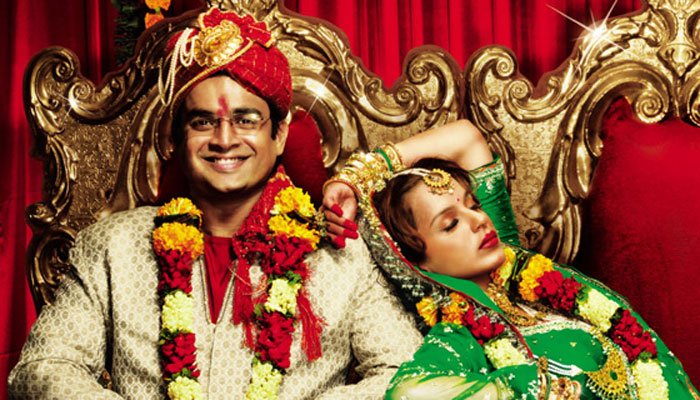When we think about how of marriage has changed over the years, web series like Made in Heaven surely convince us that at least its representation in Indian media is changing. It is easy to think that being married is not what it used to be. But when you look closely at the society, the question arises: has marriage really evolved in real life? Has it really shed its dead skins of archaic practices? And since anyone who questions it, is shut up with the same age-old argument of traditions, it is important to know where exactly this tradition of marriage emerged in history.
Scholars like Lubbock and Mc Lennan think that in the early stages of the human race there was a promiscuous society with no established institution of marriage, and no way of identifying the paternity of the child. But around 800 BC to 600 BC, there was a shift to an agricultural society, marked by caste and class divisions. The idea of private control over land also emerged, and with it, the patrilineal system to ensure that land was passed through generations.
But around 800 BC to 600 BC, there was a shift to an agricultural society, marked by caste and class divisions. The idea of private control over land also emerged, and with it, the patrilineal system to ensure that land was passed through generations.
So, now people needed to keep track of who was the father of the child. With this arose the whole ordeal of being uncomfortable with the sexuality of women, and the need to control it. And with it the idea of marriage!
There are thousands of Jataka stories written during this period that solely work on instilling the idea that the expression of female sexuality is a bad thing. Writings of Manu specifically say that women are wild sexual creatures that need to be tamed by their husbands. The solution that Manu proposes is instilling the idea of Stridharama, or the duty of a wife in the minds of women, which remains one of the basic tenets of Hindu marriage till now.
Also read: My Experience On Matrimonial Sites —The Cesspits Of Humanity
Stephanie Coontz, the author of “Marriage, A History“, writes, quoting the historian Margaret Hunt, who said marriage was, “the main means of transferring property, occupational status, personal contacts, money, tools, livestock, and women across generations, and kin groups.” The main purpose and primary focus of marriage was then a transaction that solidified gender roles and determined a strict division of labour within the home. Women were essentially treated like properties themselves, their ownership transferred from their parents to their husband when they were married. In fact, the ritual of ‘Kanyadan’ in Hindu weddings solely portrays this transfer of ownership. The shocking thing is that this and many other sexist rituals are still carried out during weddings.
In Christian weddings, the act of father “giving away” daughter is a similar practice. Also, saying, “husband and wife” rather than “man and wife” is a simple change that would make it more equal. Gender prejudice is also hidden in vows that uses the words “honour and obey”, specifically for women. Gender-specific wedding symbols like mangalsutra, sindoor, bangles, etc. for the women, but not for the man only makes the wedding look like a deal of ownership being passed. How about “exchanging” mangalsutras and making it a two-way deal to establish your marital status? And if that cannot happen, how about getting rid of them?
Gender-specific wedding symbols like mangalsutra, sindoor, bangles, etc. for the women, but not for the man only makes the wedding look like a deal of ownership being passed. How about “exchanging” mangalsutras and making it a two-way deal to establish your marital status? And if that cannot happen, how about getting rid of them?
Marriage has evolved a lot. Or at least it is moving towards equality. People have now started thinking about dividing labour not based on gender, but efficiency. Partners try to share the responsibility of raising up a child. These changes have mostly started in the metropolitan cities, while several parts of the country are still continuing with unequal sexist practices.
The question, however, is that even after getting rid of sexist practices and beliefs, can there be a feminist marriage? Marriage as an institution, was essentially based on looking at women as property. Can all these reforms really change the foundation of marriage?
Also read: “Made In Heaven?” Maybe Not!: The Stigma On Unmarried Women
When a woman is married, she is expected to move out of her own family, literally and emotionally, and become part of another. But the man is spared from any such expectations. Is it not then a part of the system of patriliny, and at large patriarchy? Perhaps, we can come up with a solution and make marriage a two-way street in every way. But we still have a long way to go.
Featured Image Source: Zee News
About the author(s)
Shravya Shruti is currently pursuing masters in English from Delhi University. She can be often found curled up with a good book, or trying to hide from people, or having an existential crisis. Sometimes all at once.





“How about “exchanging” mangalsutras and making it a two-way deal to establish your marital status? And if that cannot happen, how about getting rid of them?” A sound argument. These thoughts generated within me after reading “Why were women enslaved” by Periyar. I remember how much I was rebuked for I really wanted to apply it. Was happy to read this article. Good work!